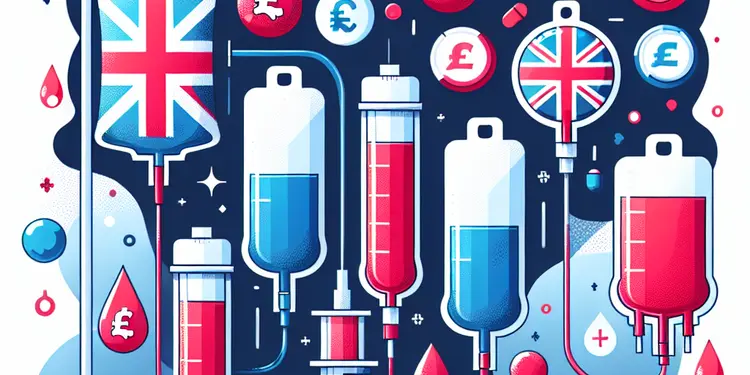
Find Help
More Items From Ergsy search
-

Blood Product Transfusions
Relevance: 100%
-
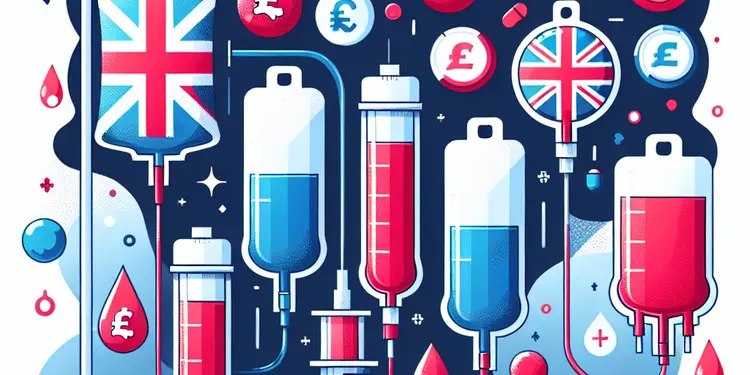
What types of blood products can be transfused?
Relevance: 91%
-
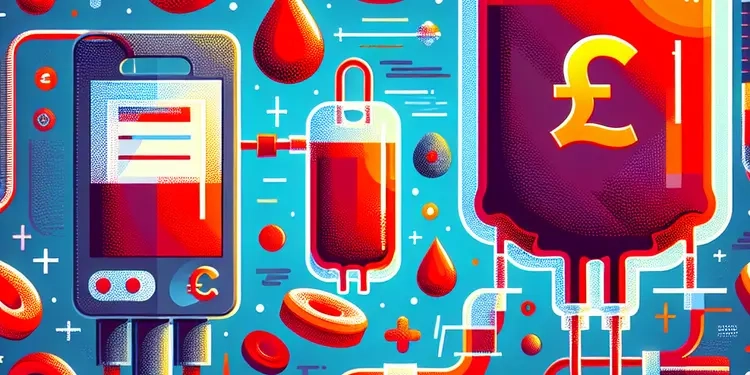
What is a blood transfusion?
Relevance: 80%
-
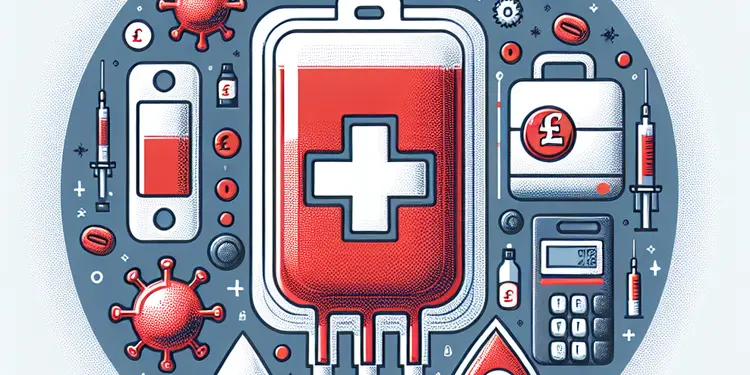
Is HTLV a risk in blood transfusions?
Relevance: 71%
-
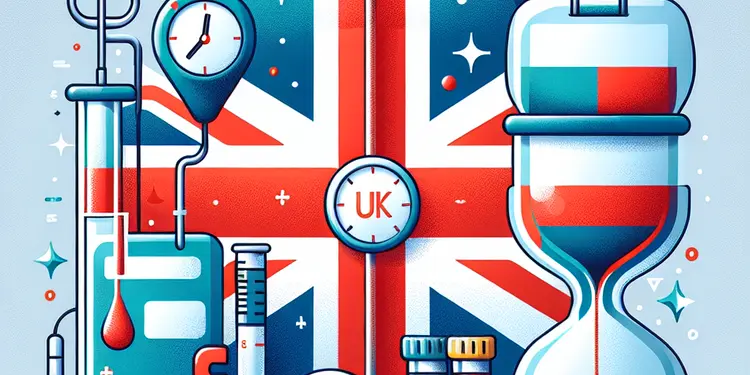
Is there an age limit for receiving blood transfusions?
Relevance: 70%
-

Blood Transfusion
Relevance: 69%
-
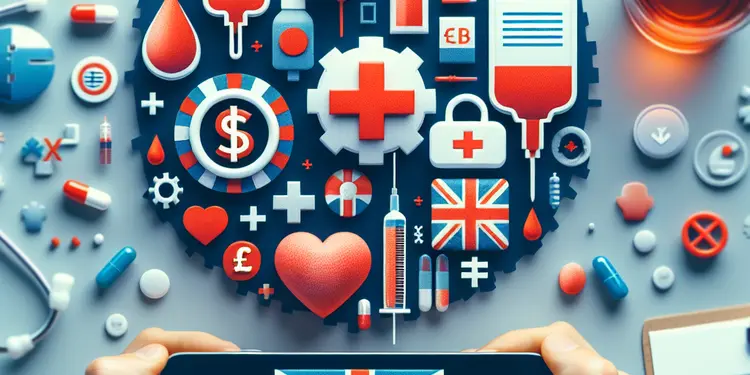
Are there risks associated with blood transfusions?
Relevance: 69%
-
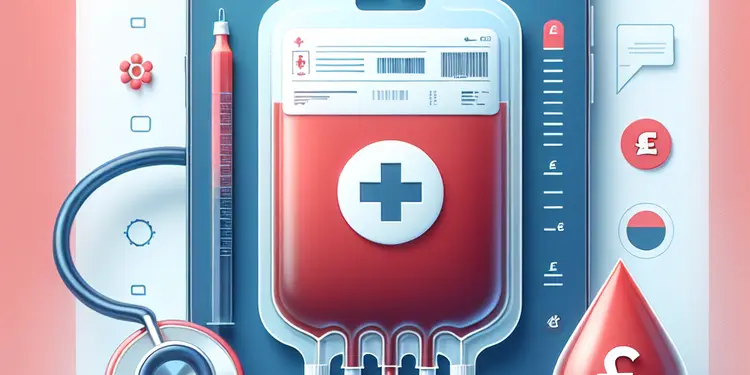
Can bacterial infections be transmitted through blood transfusion?
Relevance: 69%
-
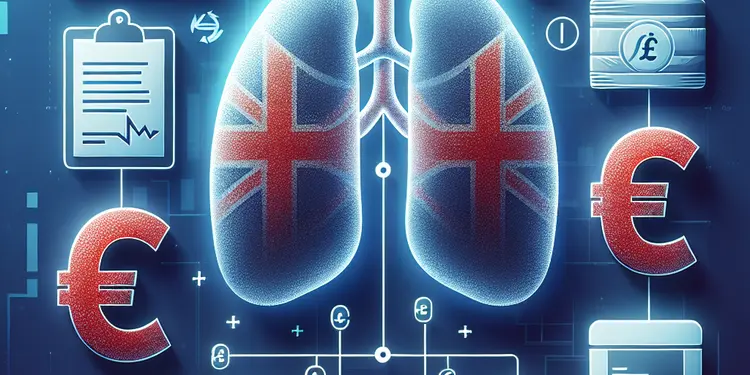
Is Hepatitis B a risk in blood transfusions?
Relevance: 68%
-
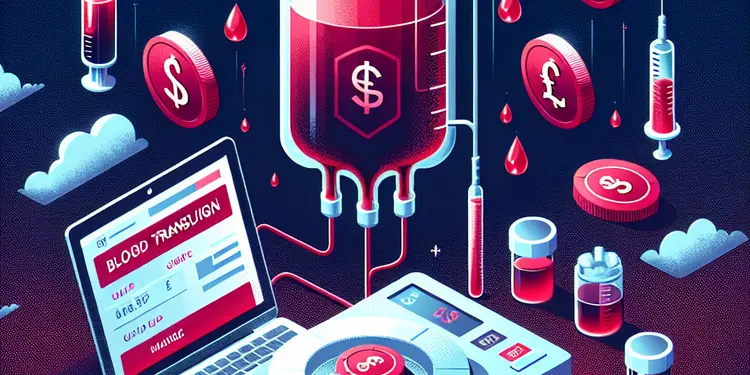
Why might someone need a blood transfusion?
Relevance: 68%
-
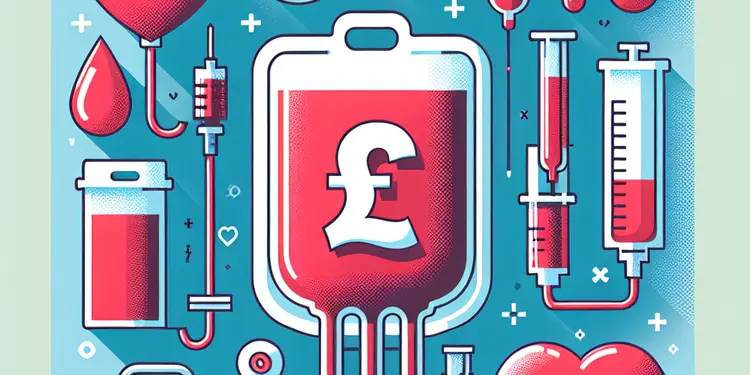
Can HIV be transmitted through blood transfusions?
Relevance: 68%
-
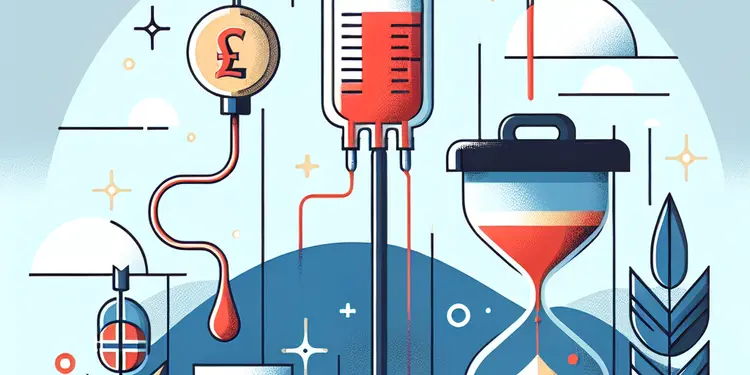
How long does a blood transfusion take?
Relevance: 66%
-
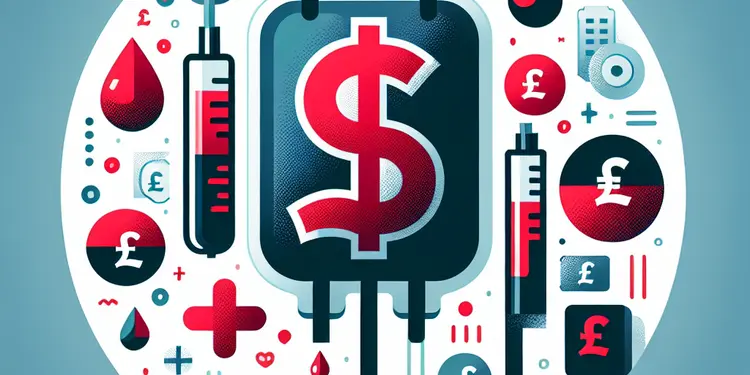
What are some common reasons blood transfusions are needed?
Relevance: 65%
-

What diseases can be spread by blood transfusions?
Relevance: 64%
-
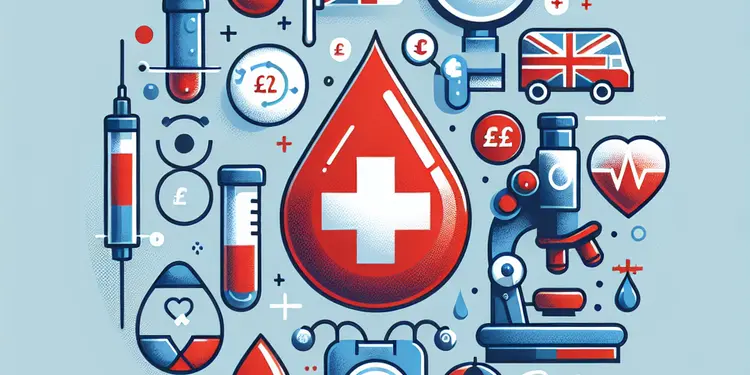
How do healthcare providers match blood for transfusions?
Relevance: 64%
-
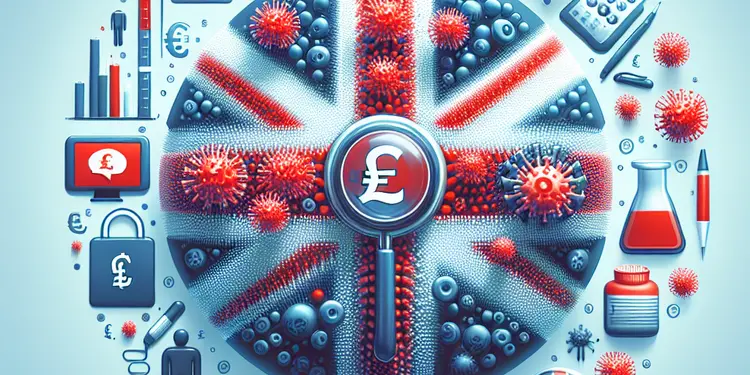
Is Zika virus screened for in blood transfusions?
Relevance: 63%
-

Is malaria still a concern for blood transfusion safety?
Relevance: 63%
-
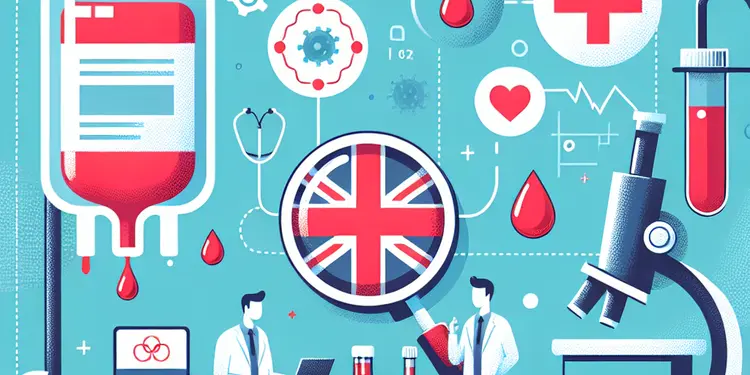
Can you get any prion diseases from blood transfusion?
Relevance: 63%
-
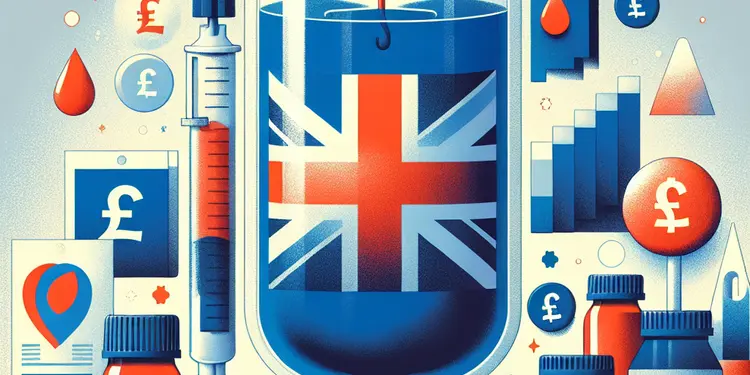
Is Chagas disease a concern with blood transfusions?
Relevance: 62%
-
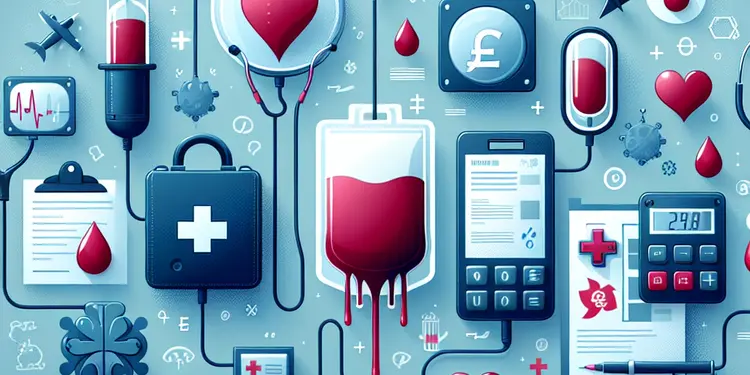
Can certain medical conditions prevent receiving blood transfusions?
Relevance: 61%
-
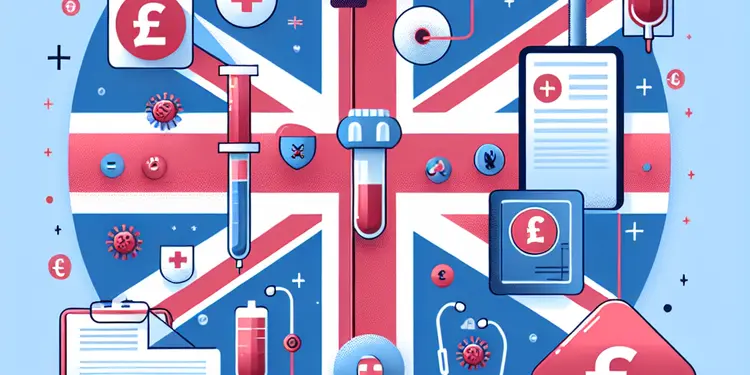
Are there any parasites that can be transmitted through blood transfusions?
Relevance: 61%
-
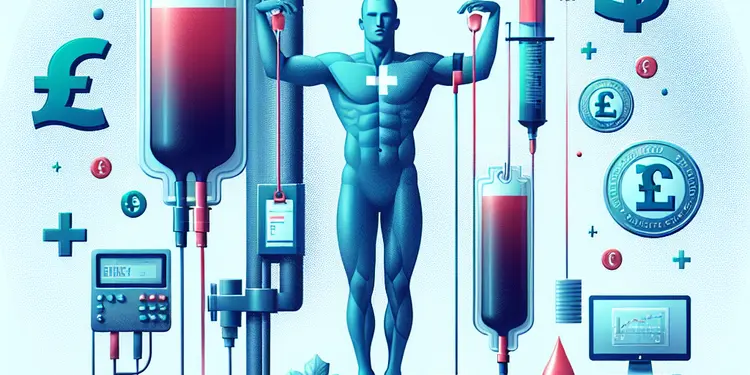
Can someone have a reaction to a mismatched blood transfusion?
Relevance: 61%
-
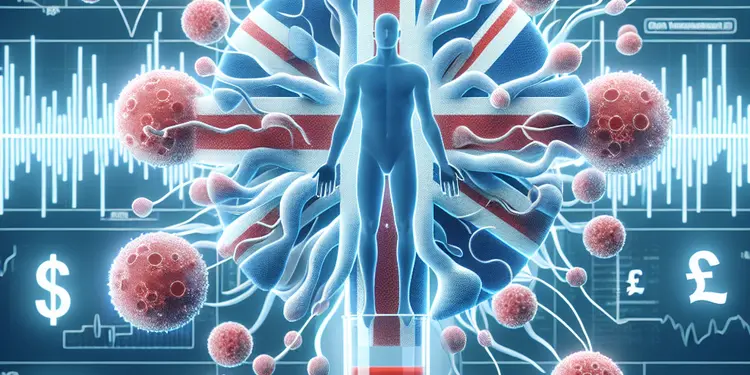
Can syphilis be transmitted via blood transfusion?
Relevance: 61%
-
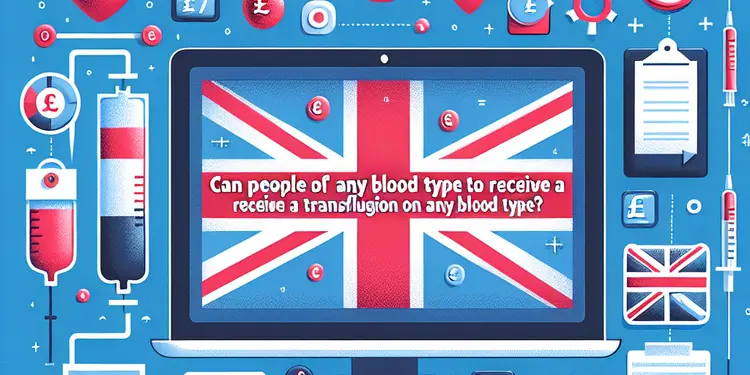
Can people of any blood type receive a transfusion of any blood type?
Relevance: 60%
-
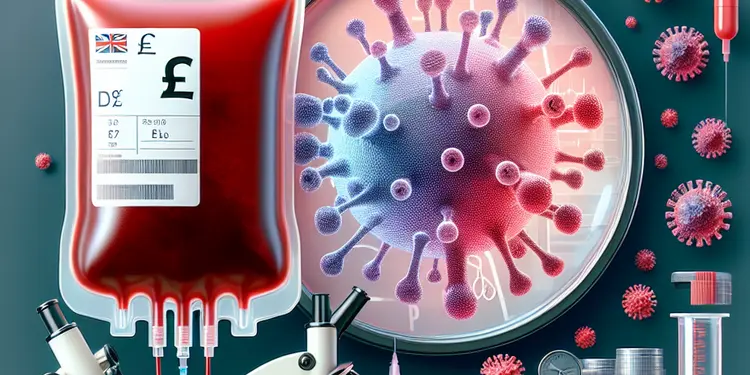
What is the most common disease transmitted by blood transfusion?
Relevance: 60%
-
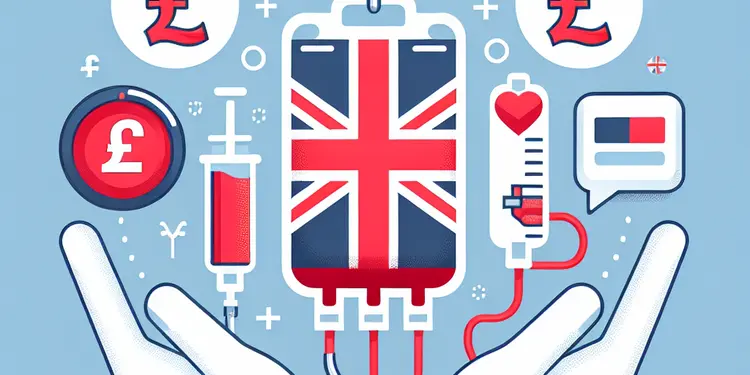
Can COVID-19 be transmitted through blood transfusions?
Relevance: 59%
-
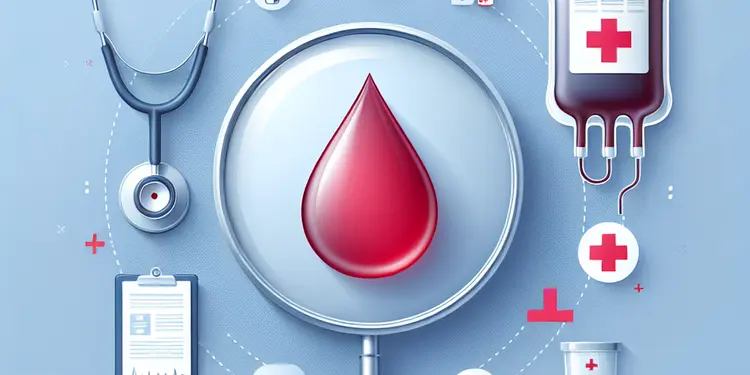
How do doctors determine how much blood is needed for a transfusion?
Relevance: 59%
-
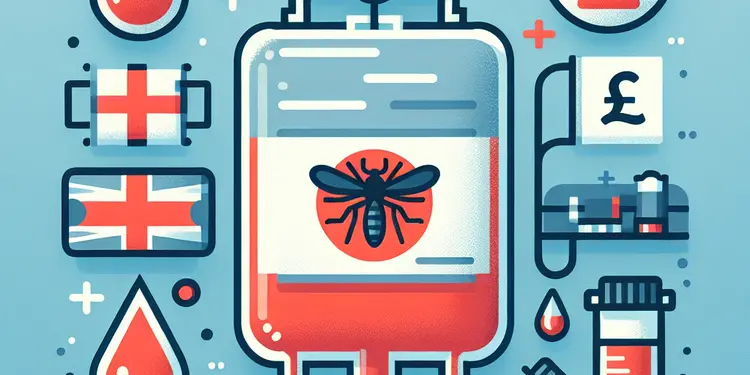
Can Dengue fever be transmitted through blood transfusions?
Relevance: 59%
-
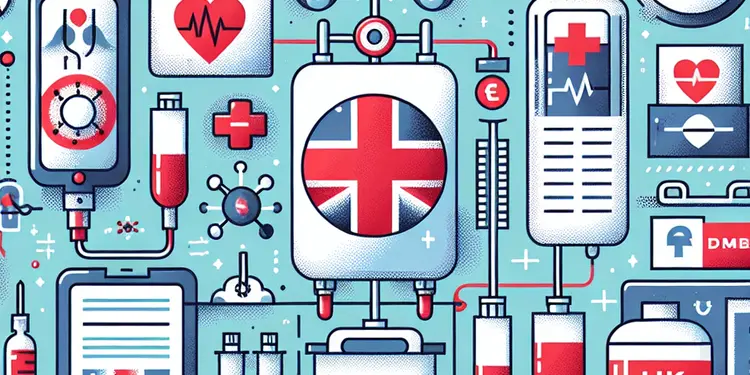
What measures are taken to prevent disease transmission in blood transfusions?
Relevance: 58%
-
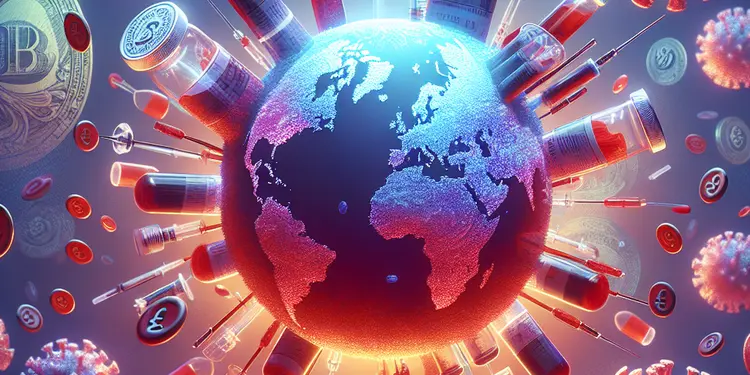
Can cytomegalovirus (CMV) be spread through transfusions?
Relevance: 55%
-

What is plasma, and why might it be transfused?
Relevance: 53%
-
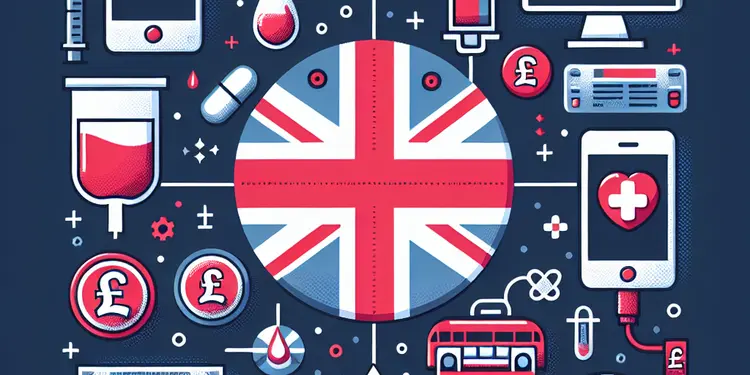
Is blood used for transfusions safe?
Relevance: 53%
-
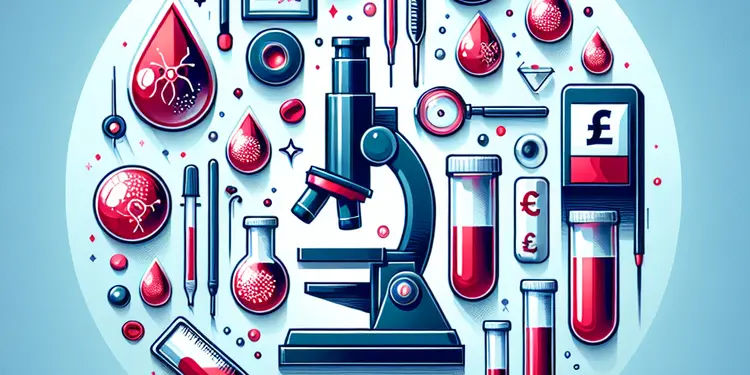
How is blood screened to prevent disease transmission?
Relevance: 50%
-
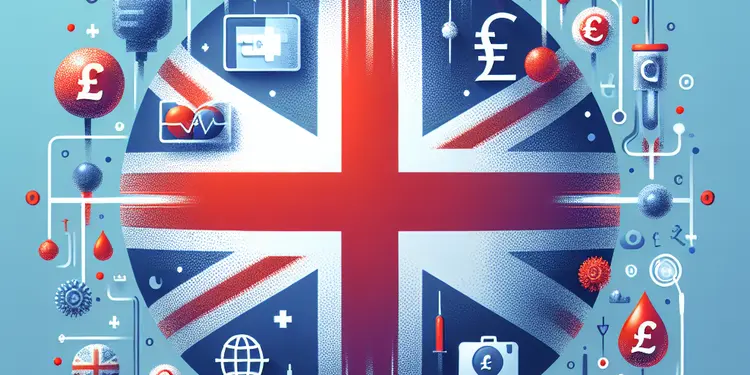
Are there global differences in screening for blood transfusions?
Relevance: 47%
-
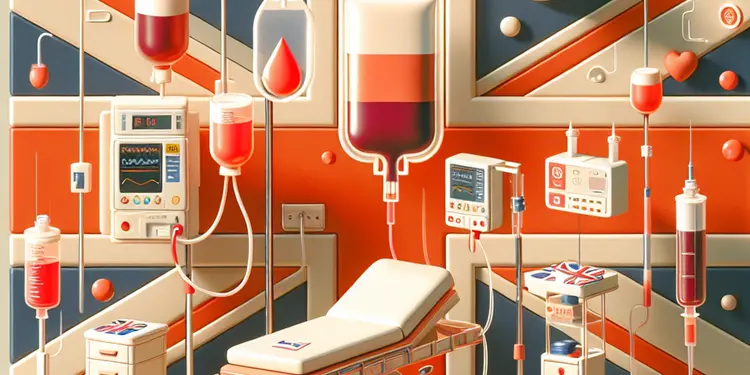
What should a patient expect after a blood transfusion?
Relevance: 43%
-
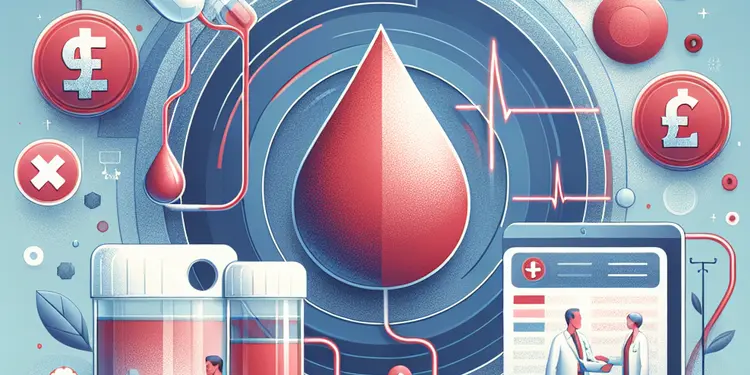
What kind of follow-up care is needed after a blood transfusion?
Relevance: 42%
-
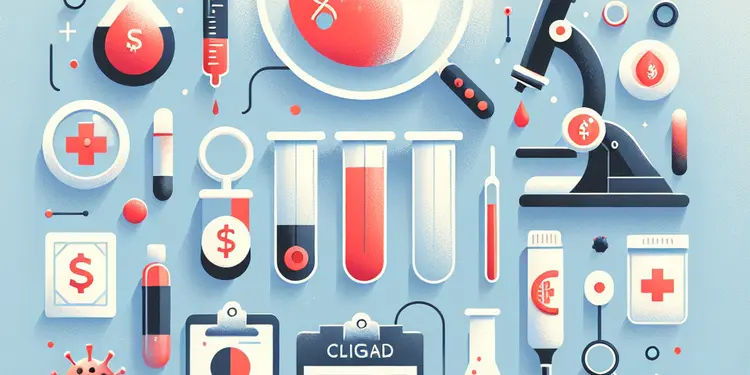
What other viruses are tested for in blood donations?
Relevance: 41%
-
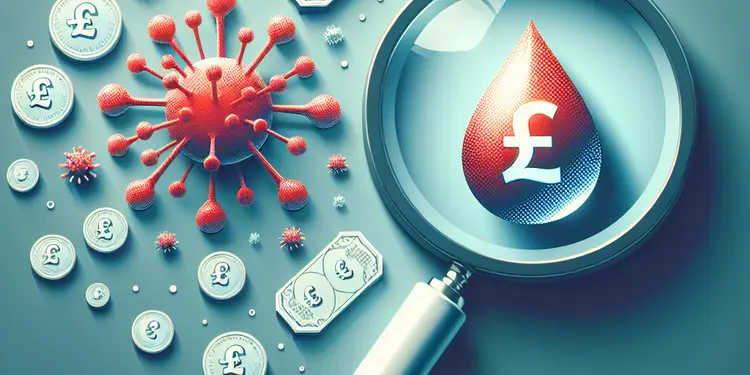
Are new emerging pathogens a risk for blood safety?
Relevance: 41%
-
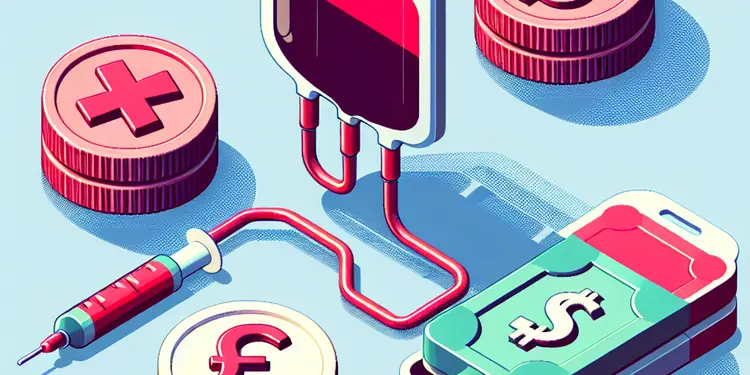
How is a blood transfusion performed?
Relevance: 34%
-

What is a Product Recall in the UK?
Relevance: 34%
Introduction to Blood Products
Blood transfusions are a critical component of medical care, offering life-saving interventions for a variety of conditions. In the UK, the NHS Blood and Transplant service ensures the safe supply and distribution of blood products. It's essential to understand the different types of blood products available for transfusion and their uses.
Whole Blood
Whole blood, as the name suggests, is blood collected from a donor without any separation into its individual components. It contains red blood cells, white blood cells, platelets, and plasma. Although it can be used for transfusions, it is less common due to the specific needs of patients and the availability of component separation technologies. Whole blood is typically used in scenarios where rapid, massive transfusion is required, such as severe trauma with significant blood loss.
Red Blood Cells
Red blood cells (RBCs) are the most commonly transfused blood component. They are crucial for carrying oxygen from the lungs to the rest of the body and returning carbon dioxide to be exhaled. RBC transfusions are primarily used to treat anemia or blood loss from surgery, trauma, or illness where oxygen delivery to tissues is compromised. Red blood cells are stored in refrigerated conditions and have a shelf life of up to 35 days.
Platelets
Platelets, or thrombocytes, are small cell fragments vital for normal blood clotting. Platelet transfusions are crucial in treating patients with conditions that cause low platelet counts or dysfunctional platelets, such as leukemia, aplastic anemia, or following chemotherapy treatments. Platelets are collected through a process called apheresis or from pooled whole blood donations. They have a short shelf life of only 5 to 7 days and must be stored at room temperature.
Plasma
Plasma is the liquid component of blood that contains water, salts, enzymes, antibodies, and other proteins. It is used to treat patients with liver disease, severe infections, or burns and is crucial in managing bleeding disorders due to factor deficiencies, like hemophilia. Plasma can be further processed into products like cryoprecipitate, which is rich in clotting factors. Plasma transfused is usually frozen, known as fresh frozen plasma (FFP), and has a shelf life of up to a year when stored in a frozen state.
Specialized Blood Products
In addition to these common products, other specialized blood products may be used. These include granulocytes for severe neutropenia cases and stem cells for bone marrow transplant procedures. Each of these products serves unique roles and requires careful consideration to match to patients' needs.
Introduction to Blood Products
Blood transfusions help save lives. The NHS Blood and Transplant service in the UK provides blood for those in need. Blood comes in different types, and it is important to know what they are and how they are used.
Whole Blood
Whole blood means the blood is taken from a donor and not split into parts. It has red and white blood cells, platelets, and plasma. It is not used often because people usually need just certain parts of the blood. We use whole blood when someone has lost a lot of blood quickly, like in an accident.
Red Blood Cells
Red blood cells (RBCs) are used the most because they carry oxygen in the body. They help when someone has anemia or has lost blood from surgery or an accident. Red blood cells are kept in a fridge and can be stored for up to 35 days.
Platelets
Platelets help blood to clot, stopping bleeding. They are important for people with low platelet counts, like those with certain illnesses or after chemotherapy. Platelets are taken from whole blood or through a special process called apheresis. They must be used quickly and are kept at room temperature for 5 to 7 days.
Plasma
Plasma is the liquid part of blood. It helps people with liver problems, bad infections, or burns. It also helps those with bleeding problems. Plasma can be turned into other products that help with clotting. Plasma is usually frozen, known as fresh frozen plasma, and can be stored for up to a year.
Specialized Blood Products
There are other special blood products too. These are used for very specific needs, like severe infections or bone marrow transplants. Each product is different and must be matched carefully to the person's needs.
Frequently Asked Questions
What are the main types of blood products that can be transfused?
The main types of blood products that can be transfused include whole blood, red blood cells, platelets, plasma, and cryoprecipitate.
What is whole blood transfusion?
Whole blood transfusion involves the administration of blood in the state it was collected and contains all blood components, including red blood cells, white blood cells, plasma, and platelets.
What are red blood cell transfusions used for?
Red blood cell transfusions are used to treat anemia, severe blood loss, and to improve oxygen delivery to tissues.
What is platelet transfusion?
Platelet transfusion is used to increase platelet counts in patients with conditions affecting their bone marrow or those who have significant bleeding.
When is plasma transfusion necessary?
Plasma transfusion is often necessary for patients with clotting disorders, liver disease, or during massive transfusion protocols.
What is cryoprecipitate and when is it used?
Cryoprecipitate is a component of plasma rich in clotting factors, used to treat conditions like hemophilia or in cases of massive bleeding.
Can blood components be separated for transfusion purposes?
Yes, blood can be separated into components such as red blood cells, white blood cells, platelets, and plasma for specific transfusion needs.
What are leucocyte-depleted blood products?
Leucocyte-depleted blood products have had white blood cells removed to reduce the risk of febrile reactions and transmission of certain viruses.
What is the purpose of irradiated blood products?
Irradiated blood products are treated with radiation to prevent transfusion-associated graft-versus-host disease.
What are the safety measures taken with blood products?
Blood products undergo rigorous testing for infectious diseases, compatibility testing, and may be treated to remove pathogens to ensure safety.
What type of transfusion is given for severe burns?
Plasma transfusions are commonly given to patients with severe burns to help restore blood volume and improve coagulation.
Can synthetic blood products be used for transfusion?
Synthetic blood products or oxygen therapeutics are under research and not yet widely used, but they aim to provide alternatives to traditional transfusions.
How are platelet transfusions different in cancer patients?
Cancer patients often receive platelet transfusions to prevent or treat bleeding due to low platelet counts from chemotherapy.
What blood product is used for neonates?
Neonates often receive specially matched and prepared red blood cell transfusions to manage conditions like anemia of prematurity.
Are there blood products used for immune disorders?
Yes, immunoglobulin products derived from plasma can be used to treat various immune disorders.
What is a frozen plasma transfusion?
Frozen plasma transfusion involves administering plasma that has been frozen for storage and is thawed before transfusion, used for clotting disorders and massive bleeding.
What are granulocyte transfusions?
Granulocyte transfusions, though less common, can be used to treat severe, life-threatening infections in patients with neutropenia.
How are blood products selected for transfusion?
Blood products are selected based on blood type compatibility, cross-matching with the recipient, and the specific clinical needs of the patient.
What are pathogen-reduced blood products?
Pathogen-reduced blood products undergo additional processing to reduce the risk of transfusion-transmitted infections by inactivating viruses, bacteria, and parasites.
What advancements exist in blood product transfusion technology?
Advancements include improved screening tests, pathogen reduction technologies, and developments in synthetic and genetically modified blood products to enhance safety and availability.
What kinds of blood can be given to someone who needs it?
There are different parts of blood that can be given to someone. These parts are:
- Whole blood (this is all the blood together)
- Red blood cells (these carry oxygen in the blood)
- Platelets (these help the blood to stop bleeding)
- Plasma (this is the liquid part of blood)
- Cryoprecipitate (this helps the blood to clot)
Tools like highlighting important words or using pictures can help you understand better. Reading with someone can also be really helpful.
What is whole blood transfusion?
A whole blood transfusion is when someone gets blood from another person. The blood has all the parts in it, like red cells, white cells, platelets, and plasma. It helps when people lose a lot of blood or are very sick.
Tip: Use pictures or videos to help understand better. Talking with someone you trust can also help.
Giving someone whole blood means giving them blood just like it is when taken from a person. It has all the parts like red blood cells, white blood cells, plasma, and platelets.
If reading is hard, you can use tools like a ruler to follow the words, or apps that read aloud to you.
Why do people get red blood cell transfusions?
Red blood cell transfusions are used to help people when they do not have enough healthy red blood cells. Red blood cells are important because they carry oxygen all around the body. People might need a red blood cell transfusion if they lose a lot of blood, have certain illnesses, or if their body is not making enough red blood cells.
If reading this is hard, try using:
- A friend or family member to read with you
- An audio book or text-to-speech tool to listen to the text
- Reading in a quiet place with good light
Red blood cell transfusions help people who have low red blood cells. They are used for:
- Treating anemia (when your body doesn't have enough red blood cells).
- Helping with severe blood loss (from an injury or surgery).
- Improving oxygen delivery in the body (getting more oxygen to where it's needed).
Some helpful tools and techniques:
- Pictures or diagrams to show how blood transfusions work.
- Simple videos that explain blood transfusions.
- Talking to a doctor or nurse who can answer questions.
What is platelet transfusion?
A platelet transfusion is when you get platelets from someone else. Platelets are tiny parts of blood that help stop bleeding. Sometimes, people need more platelets if they don't have enough. This can help them feel better.
Here are some tips to understand better:
- Ask someone to explain it to you.
- Watch a video about blood and platelets.
- Use pictures and diagrams to help.
A platelet transfusion helps give you more platelets. Platelets are tiny parts of blood that help stop bleeding. Doctors use platelet transfusions for people whose bodies can't make enough platelets or if they are bleeding a lot.
When Do You Need Plasma Transfusion?
Plasma transfusion means getting plasma from another person. Plasma is a part of your blood. Sometimes, doctors give plasma to help you when you are sick or hurt.
You might need plasma if:
- Your blood does not clot well. Clotting helps stop bleeding.
- You have lost a lot of blood.
- You have liver problems.
Always talk to a doctor if you have questions.
Helpful Tip: Ask someone you trust to help you understand and talk about it with your doctor.
Plasma transfusion is when doctors give plasma to someone to help them get better. It is needed for people who have problems with blood clotting, liver issues, or when they lose a lot of blood and need a big transfusion.
Tools like audiobooks or text-to-speech apps can help make reading easier. Looking at pictures or videos about plasma transfusions can also help you understand better.
What is cryoprecipitate and when do we use it?
Cryoprecipitate is a part of blood. It helps stop bleeding.
Doctors use cryoprecipitate when a person is bleeding a lot and needs help to stop. It gives the body more of what it needs to form clots and stop bleeding.
If you need help understanding, ask someone you trust to explain it to you. You can also use pictures or videos.
Cryoprecipitate is a part of blood that helps stop bleeding. It has special ingredients to help blood clot, or thicken. Doctors use it to help people who have problems like hemophilia, where blood does not clot easily, or when someone is bleeding a lot.
Can blood parts be split up for giving to patients?
Doctors can take different parts out of blood. They do this to help people who are sick.
Here are some ways to understand better:
- Use pictures to see how it works.
- Ask someone to explain it to you.
Yes, we can separate blood into different parts. These parts are red blood cells, white blood cells, platelets, and plasma. Each part is used for different medical needs.
What is leucocyte-depleted blood?
Leucocyte-depleted blood is blood that has had most of the white blood cells taken out. White blood cells are called leucocytes. This type of blood is used in hospitals to help people who are sick.
If you want help to understand words, you can use a dictionary or ask someone to explain them to you. Drawing pictures of words can also help.
Leucocyte-depleted blood is blood that has had the white blood cells taken out. This makes it safer. It helps stop things like fever and passing on some viruses.
Why do we use irradiated blood products?
Doctors use irradiated blood to keep people safe. The blood is treated so there are no bad cells. This helps people who are very sick. It protects their body when they get blood from others.
If you want to understand more, you can:
- Ask your doctor questions.
- Use pictures or videos to learn.
- Read with someone who can help explain.
Blood that has been treated with special rays is called irradiated blood.
This is done to stop a problem called graft-versus-host disease from happening when blood is given to someone else.
If you find reading hard, you can use tools like text-to-speech to hear this information out loud, or you can ask someone to explain it to you using simple words. Remember, it's always okay to ask for help!
How do we make sure blood is safe to use?
Blood is checked very carefully to make sure it is safe. People test it to make sure it does not have any bad germs. They also check to make sure it will work well with the person getting it. Sometimes, they treat the blood to take out any harmful germs.
If you find reading hard, you can ask someone to read it with you or use a reading app to help. These tools can read the words out loud for you and make understanding easier.
What blood do doctors give for bad burns?
When burns are very bad, doctors give special blood. This helps people get better.
If you need help to understand, a friend or family member can read it with you. Drawing pictures of what you read can also help.
Doctors give plasma to people with bad burns. Plasma helps put blood back in the body and helps the blood clot better.
Can we use fake blood for transfusions?
Fake blood, known as synthetic blood, is not real blood. Scientists make it in labs.
Doctors want to know if it is safe to use it in people who need extra blood.
Tools like pictures or videos can help explain more about synthetic blood.
Scientists are working on making fake blood. This fake blood is not used everywhere yet. They want to use it instead of normal blood in hospitals one day.
Here are a few things that can help with understanding:
- Use a ruler to help track each line when reading.
- Read out loud to help process the words.
- Ask someone to explain words you don't know.
- Break the text into small parts and read slowly.
How are platelet transfusions different for people with cancer?
When people have cancer, they might need special blood help called platelet transfusions.
Platelets are tiny parts of the blood that help stop bleeding.
People with cancer often have low platelets because of their treatment.
Their platelet transfusions might be different to make sure they stay healthy.
If reading is hard, you can ask someone to read with you or use an app that reads text aloud.
People with cancer sometimes need platelet transfusions. This helps stop bleeding. They might have low platelets because of the medicine they take for cancer, called chemotherapy.
What type of blood is given to newborn babies?
When newborn babies need blood, doctors give them a special type.
If you need help understanding, ask someone to explain.
A grown-up can help you find more information.
Newborn babies sometimes need blood from donors to help when they have a condition that makes them tired or weak because they don’t have enough healthy blood cells. This condition is called anemia, and it can happen if a baby is born too early.
Do doctors use blood to help with immune problems?
Yes, special medicine made from blood can help treat different problems with the immune system.
What is a frozen plasma transfusion?
A frozen plasma transfusion is when doctors give you plasma from blood. Plasma is the liquid part of blood. It helps stop bleeding.
If you have a problem with your blood, like not enough plasma, a transfusion can help you feel better.
Doctors thaw the frozen plasma, which means they make it warm and liquid again, and then give it to you.
Tools that can help you understand more: Talk to a doctor or nurse. Ask questions if you don’t understand.
When you get frozen plasma, it's like getting a special liquid from someone else. This liquid was kept cold and hard like ice. It is warmed up before it's given to you. People use it to help stop bleeding too much or when your blood needs help to clot or stick together.
What Are Granulocyte Transfusions?
Granulocyte transfusions are when doctors give a person special blood cells called granulocytes to help fight infection. Granulocytes are a part of our blood that helps keep us healthy.
These transfusions can help people who are sick or have weak immune systems.
If you want to understand more, you can ask your doctor or nurse. Drawing pictures or using simple words can help too!
Sometimes, doctors give patients a treatment called granulocyte transfusions. This can help when someone has very bad infections and low white blood cells.
How do you choose blood for transfusion?
Doctors and nurses need to make sure the blood is a good match for the person who needs it. They do some tests to check this. This helps to keep the person safe and healthy.
If you find reading hard, you can ask someone to read it to you. Using pictures or videos can also help you understand better. Talking about it with someone you trust can make things clearer too.
Doctors choose blood to match the patient's blood type. They also check if the blood is safe. They use it to help what the patient needs.
What are pathogen-reduced blood products?
Pathogen-reduced blood products are special blood items where germs are made less harmful. This makes them safer for people who need them.
Here is how it works:
- Blood is taken from someone and then treated to remove or kill most of the germs.
- This helps stop the spread of illnesses when the blood is given to someone else.
Ways to learn more:
- Look at simple pictures or videos to see how the process works.
- Ask a doctor or nurse to explain it to you in a simple way.
Pathogen-reduced blood products are treated to make them safer. They go through extra steps to kill germs like viruses, bacteria, and parasites. This helps to make sure these blood products don’t spread infections to people who get them.
What new things can we use to make blood transfusions better?
Scientists and doctors are always working to make blood transfusions safer and better. They invent new tools and machines. They find out how to keep blood fresh for longer. They make new rules to ensure blood is really clean and safe before it is given to someone.
Here are some things that can help you learn more:
- Watch videos about how blood transfusions work.
- Ask a doctor or a nurse about blood transfusions.
- Use picture books that explain medical ideas.
If these tips are hard, you can ask someone to help you understand.
New things have made blood tests better, made blood safer, and created new kinds of fake or changed blood to help keep people safe and have more blood when needed.
Useful Links
- Ergsy carfully checks the information in the videos we provide here.
- Videos shown by Youtube after a video has completed, have NOT been reviewed by ERGSY.
- To view, click the arrow in centre of video.
- Most of the videos you find here will have subtitles and/or closed captions available.
- You may need to turn these on, and choose your preferred language.
- Go to the video you'd like to watch.
- If closed captions (CC) are available, settings will be visible on the bottom right of the video player.
- To turn on Captions, click settings .
- To turn off Captions, click settings again.
More Items From Ergsy search
-

Blood Product Transfusions
Relevance: 100%
-

What types of blood products can be transfused?
Relevance: 91%
-

What is a blood transfusion?
Relevance: 80%
-

Is HTLV a risk in blood transfusions?
Relevance: 71%
-

Is there an age limit for receiving blood transfusions?
Relevance: 70%
-

Blood Transfusion
Relevance: 69%
-

Are there risks associated with blood transfusions?
Relevance: 69%
-

Can bacterial infections be transmitted through blood transfusion?
Relevance: 69%
-

Is Hepatitis B a risk in blood transfusions?
Relevance: 68%
-

Why might someone need a blood transfusion?
Relevance: 68%
-

Can HIV be transmitted through blood transfusions?
Relevance: 68%
-

How long does a blood transfusion take?
Relevance: 66%
-

What are some common reasons blood transfusions are needed?
Relevance: 65%
-

What diseases can be spread by blood transfusions?
Relevance: 64%
-

How do healthcare providers match blood for transfusions?
Relevance: 64%
-

Is Zika virus screened for in blood transfusions?
Relevance: 63%
-

Is malaria still a concern for blood transfusion safety?
Relevance: 63%
-

Can you get any prion diseases from blood transfusion?
Relevance: 63%
-

Is Chagas disease a concern with blood transfusions?
Relevance: 62%
-

Can certain medical conditions prevent receiving blood transfusions?
Relevance: 61%
-

Are there any parasites that can be transmitted through blood transfusions?
Relevance: 61%
-

Can someone have a reaction to a mismatched blood transfusion?
Relevance: 61%
-

Can syphilis be transmitted via blood transfusion?
Relevance: 61%
-

Can people of any blood type receive a transfusion of any blood type?
Relevance: 60%
-

What is the most common disease transmitted by blood transfusion?
Relevance: 60%
-

Can COVID-19 be transmitted through blood transfusions?
Relevance: 59%
-

How do doctors determine how much blood is needed for a transfusion?
Relevance: 59%
-

Can Dengue fever be transmitted through blood transfusions?
Relevance: 59%
-

What measures are taken to prevent disease transmission in blood transfusions?
Relevance: 58%
-

Can cytomegalovirus (CMV) be spread through transfusions?
Relevance: 55%
-

What is plasma, and why might it be transfused?
Relevance: 53%
-

Is blood used for transfusions safe?
Relevance: 53%
-

How is blood screened to prevent disease transmission?
Relevance: 50%
-

Are there global differences in screening for blood transfusions?
Relevance: 47%
-

What should a patient expect after a blood transfusion?
Relevance: 43%
-

What kind of follow-up care is needed after a blood transfusion?
Relevance: 42%
-

What other viruses are tested for in blood donations?
Relevance: 41%
-

Are new emerging pathogens a risk for blood safety?
Relevance: 41%
-

How is a blood transfusion performed?
Relevance: 34%
-

What is a Product Recall in the UK?
Relevance: 34%


